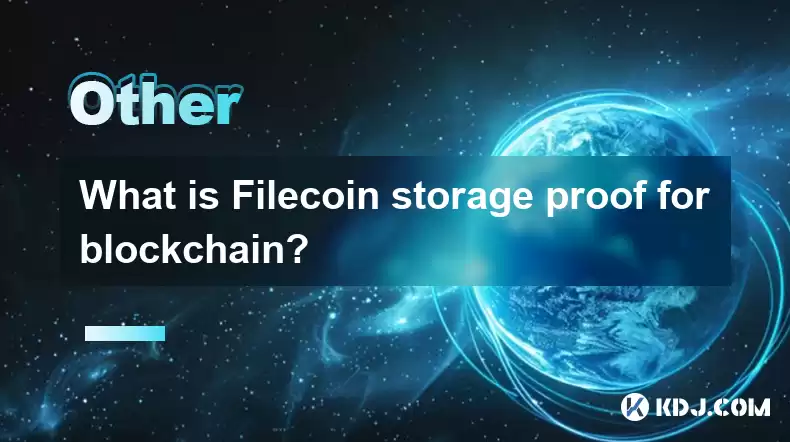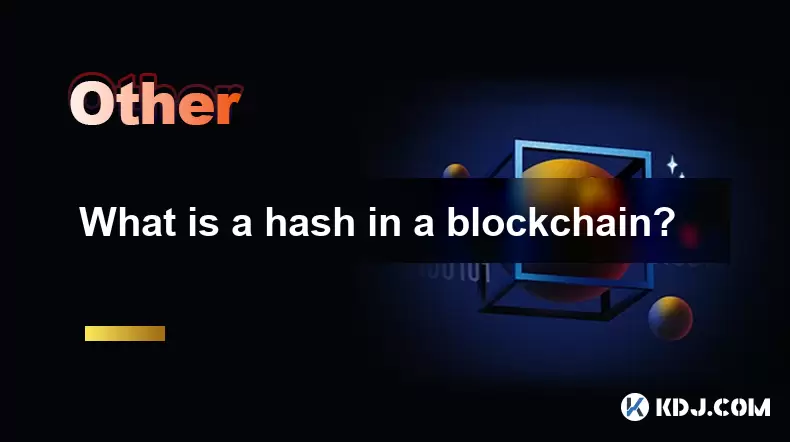-
 Bitcoin
Bitcoin $113900
-1.39% -
 Ethereum
Ethereum $3517
-4.15% -
 XRP
XRP $3.009
1.59% -
 Tether USDt
Tether USDt $0.9997
-0.04% -
 BNB
BNB $766.8
-1.41% -
 Solana
Solana $164.6
-2.38% -
 USDC
USDC $0.9998
-0.02% -
 TRON
TRON $0.3277
0.65% -
 Dogecoin
Dogecoin $0.2023
-1.67% -
 Cardano
Cardano $0.7246
0.05% -
 Hyperliquid
Hyperliquid $38.27
-4.77% -
 Sui
Sui $3.528
-0.52% -
 Stellar
Stellar $0.3890
-0.73% -
 Chainlink
Chainlink $16.16
-2.69% -
 Bitcoin Cash
Bitcoin Cash $539.9
-4.38% -
 Hedera
Hedera $0.2425
-2.00% -
 Avalanche
Avalanche $21.71
-0.97% -
 Toncoin
Toncoin $3.662
5.73% -
 Ethena USDe
Ethena USDe $1.000
-0.02% -
 UNUS SED LEO
UNUS SED LEO $8.964
0.35% -
 Litecoin
Litecoin $107.7
2.33% -
 Shiba Inu
Shiba Inu $0.00001223
-0.40% -
 Polkadot
Polkadot $3.617
-0.97% -
 Uniswap
Uniswap $9.052
-2.49% -
 Monero
Monero $295.1
-3.79% -
 Dai
Dai $0.9999
0.00% -
 Bitget Token
Bitget Token $4.315
-1.85% -
 Pepe
Pepe $0.00001060
0.11% -
 Cronos
Cronos $0.1342
-2.72% -
 Aave
Aave $256.0
-0.87%
What is Filecoin storage proof for blockchain?
Filecoin's storage proof, using PoRep and PoSt, ensures data integrity and incentivizes honest storage, crucial for the network's reliability and trust.
Apr 22, 2025 at 06:29 am

Filecoin is a decentralized storage network that utilizes blockchain technology to enable users to store, retrieve, and transfer data in a secure and efficient manner. One of the key components of the Filecoin network is the storage proof, which ensures that data stored on the network is indeed being maintained by storage providers. This article will delve into the concept of Filecoin storage proof, its importance, and how it functions within the blockchain ecosystem.
Understanding Filecoin Storage Proof
Storage proof in Filecoin is a mechanism designed to verify that storage providers are actually storing the data they claim to be holding. This is crucial for maintaining the integrity and reliability of the network. Without storage proofs, there would be no way to ensure that data is being stored correctly, which could lead to data loss and undermine the trust in the system.
The concept of storage proof is rooted in the need to incentivize storage providers to act honestly. By requiring them to periodically prove that they are storing the data, Filecoin ensures that providers are held accountable for their actions. This proof mechanism is a critical part of the Filecoin protocol and is what makes the decentralized storage network viable.
How Filecoin Storage Proof Works
Filecoin uses a unique approach to storage proof called Proof-of-Replication (PoRep) and Proof-of-Spacetime (PoSt). These two mechanisms work together to ensure that data is not only stored but also remains stored over time.
Proof-of-Replication (PoRep): This proof ensures that a storage provider has created a unique copy of the data. It prevents providers from claiming to store data that they do not actually have. PoRep involves a complex cryptographic process that verifies the uniqueness of the stored data.
Proof-of-Spacetime (PoSt): This proof ensures that the data continues to be stored over time. It requires storage providers to periodically submit proofs that the data is still being held. PoSt is crucial for long-term data storage and ensures that providers do not delete data after receiving payment.
Together, PoRep and PoSt form a robust system that ensures the integrity of the Filecoin network.
The Importance of Storage Proof in Filecoin
The importance of storage proof in Filecoin cannot be overstated. It is the backbone of the network's trust and reliability. Without storage proof, users would have no way to verify that their data is being stored correctly, which could lead to data loss and a breakdown of the system.
Storage proof also plays a crucial role in the economic model of Filecoin. Storage providers are rewarded with Filecoin tokens for successfully proving that they are storing data. This incentivizes them to maintain the data and ensures that the network remains operational and secure.
The Process of Verifying Storage Proofs
The process of verifying storage proofs in Filecoin involves several steps that ensure the data is being stored correctly. Here is a detailed look at how this process works:
Data Encoding: Before data is stored, it is encoded in a way that allows for efficient verification. This encoding process is crucial for the subsequent proof mechanisms.
Initial Proof-of-Replication: When a storage provider first stores data, they must submit a PoRep to prove that they have created a unique copy of the data. This involves generating a cryptographic proof that is verified by the network.
Periodic Proof-of-Spacetime: After the initial proof, storage providers must periodically submit PoSt proofs to show that the data is still being stored. These proofs are generated at regular intervals and are verified by the network to ensure ongoing storage.
Verification by the Network: The Filecoin network uses a decentralized consensus mechanism to verify the proofs submitted by storage providers. This ensures that the proofs are valid and that the data is being stored correctly.
Challenges and Solutions in Storage Proof
While storage proof is a powerful tool for ensuring data integrity, it also presents several challenges. One of the main challenges is the computational complexity of generating and verifying proofs. This can be resource-intensive and may impact the scalability of the network.
To address these challenges, Filecoin has implemented several solutions:
Efficient Algorithms: Filecoin uses advanced cryptographic algorithms that are designed to be as efficient as possible. These algorithms help reduce the computational overhead of generating and verifying proofs.
Decentralized Verification: By using a decentralized consensus mechanism, Filecoin distributes the workload of verifying proofs across the network. This helps to mitigate the impact of computational complexity on individual nodes.
Continuous Improvement: The Filecoin team is constantly working on improving the efficiency and scalability of the storage proof mechanisms. This includes ongoing research and development to find new ways to optimize the system.
Real-World Applications of Filecoin Storage Proof
Filecoin storage proof has several real-world applications that demonstrate its utility and importance. One of the primary applications is in the field of data archiving. Organizations and individuals can use Filecoin to store large amounts of data securely and reliably, knowing that the network's storage proof mechanisms will ensure the data's integrity.
Another application is in the field of decentralized applications (dApps). Many dApps rely on decentralized storage solutions to store user data and application data. Filecoin's storage proof mechanisms provide a reliable and secure way to store this data, ensuring that dApps can operate effectively.
Frequently Asked Questions
Q: How does Filecoin ensure the privacy of stored data?
A: Filecoin uses encryption to ensure the privacy of stored data. When data is uploaded to the network, it is encrypted before being stored by providers. This means that even if a storage provider were to access the data, they would not be able to read it without the decryption key.
Q: Can storage providers be penalized for failing to provide storage proofs?
A: Yes, storage providers can be penalized for failing to provide storage proofs. If a provider fails to submit a valid proof, they can lose their collateral and be removed from the network. This incentivizes providers to maintain the data and submit proofs regularly.
Q: How does Filecoin handle disputes over storage proofs?
A: Filecoin has a dispute resolution mechanism that allows for the verification of storage proofs in case of disputes. If a user suspects that a storage provider is not storing their data correctly, they can initiate a dispute. The network will then verify the storage proofs to determine the validity of the claim.
Q: Is Filecoin storage proof compatible with other blockchain networks?
A: While Filecoin's storage proof mechanisms are designed specifically for the Filecoin network, there are ongoing efforts to explore interoperability with other blockchain networks. This could potentially allow for the use of Filecoin's storage proof mechanisms in other decentralized storage solutions.
Disclaimer:info@kdj.com
The information provided is not trading advice. kdj.com does not assume any responsibility for any investments made based on the information provided in this article. Cryptocurrencies are highly volatile and it is highly recommended that you invest with caution after thorough research!
If you believe that the content used on this website infringes your copyright, please contact us immediately (info@kdj.com) and we will delete it promptly.
- DeFi Token Summer Gains: Is Mutuum Finance the Real Deal?
- 2025-08-02 18:30:12
- Bitcoin, Realized Price, and the Top: Are We There Yet?
- 2025-08-02 18:30:12
- Dogwifhat (WIF) Rally: Will the Meme Coin Bite Back?
- 2025-08-02 19:10:12
- PayFi Heats Up: Tron's AMA Recap & TRX's Bullish Nasdaq Debut
- 2025-08-02 19:10:12
- ARK Invest, Coinbase, and BitMine: Decoding the Crypto Investment Shuffle
- 2025-08-02 19:15:23
- JasmyCoin Under Pressure: Bears Grip Tight, Testing Lower Support
- 2025-08-02 19:15:23
Related knowledge

What is the difference between on-chain and off-chain transactions?
Aug 02,2025 at 04:22pm
Understanding On-Chain TransactionsOn-chain transactions refer to digital asset transfers that are recorded directly on a blockchain ledger. These tra...

What is the double-spending problem and how does blockchain prevent it?
Aug 02,2025 at 01:07pm
Understanding the Double-Spending ProblemThe double-spending problem is a fundamental challenge in digital currency systems where the same digital tok...

What is the difference between a blockchain and a database?
Aug 01,2025 at 09:36pm
Understanding the Core Structure of a BlockchainA blockchain is a decentralized digital ledger that records data in a series of immutable blocks linke...

How does blockchain handle scalability?
Aug 02,2025 at 02:58pm
Understanding Blockchain Scalability ChallengesBlockchain scalability refers to a network's ability to handle an increasing volume of transactions wit...

What is a hash in a blockchain?
Aug 02,2025 at 05:28am
Understanding the Concept of Hash in BlockchainA hash in the context of blockchain technology refers to a unique digital fingerprint generated by a cr...

What is a hash in a blockchain?
Aug 02,2025 at 04:43am
Understanding the Concept of Hash in BlockchainA hash in the context of blockchain technology refers to a unique digital fingerprint generated by a cr...

What is the difference between on-chain and off-chain transactions?
Aug 02,2025 at 04:22pm
Understanding On-Chain TransactionsOn-chain transactions refer to digital asset transfers that are recorded directly on a blockchain ledger. These tra...

What is the double-spending problem and how does blockchain prevent it?
Aug 02,2025 at 01:07pm
Understanding the Double-Spending ProblemThe double-spending problem is a fundamental challenge in digital currency systems where the same digital tok...

What is the difference between a blockchain and a database?
Aug 01,2025 at 09:36pm
Understanding the Core Structure of a BlockchainA blockchain is a decentralized digital ledger that records data in a series of immutable blocks linke...

How does blockchain handle scalability?
Aug 02,2025 at 02:58pm
Understanding Blockchain Scalability ChallengesBlockchain scalability refers to a network's ability to handle an increasing volume of transactions wit...

What is a hash in a blockchain?
Aug 02,2025 at 05:28am
Understanding the Concept of Hash in BlockchainA hash in the context of blockchain technology refers to a unique digital fingerprint generated by a cr...

What is a hash in a blockchain?
Aug 02,2025 at 04:43am
Understanding the Concept of Hash in BlockchainA hash in the context of blockchain technology refers to a unique digital fingerprint generated by a cr...
See all articles

























































































